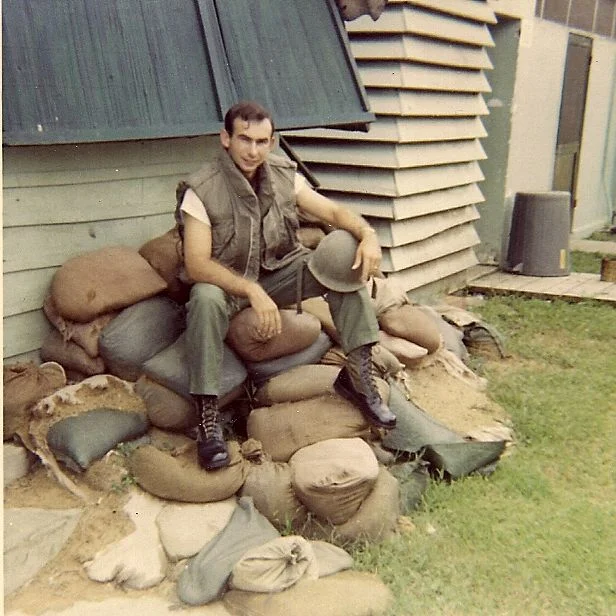Sgt. Kenneth R. Benge - Vietnam Veteran
Ken was assigned to the Ton San Hut air force base, which received, stored and dispersed all air munitions in Southeast Asia from small weapons to helicopters and airplanes. He worked in a large, secure building with no windows and a keypad to enter. Ken was an administrative clerk and was one of only two NCO’s with the security clearance to know the combination to enter the building. As the main helicopter port in Vietnam, Ton San Hut was known as “Rocket City” because of the ceaseless efforts of the North Vietnamese Army to wipe out a major source of the attacks on them. Although rockets hit close enough to the supply building to throw dirt and mud on the roof, the building itself was never hit during the entire course of the war.
Guard Post
Given the danger that any soldier faced in Vietnam, it’s hard to remember that daily life still went on. Enterprising Vietnamese women presented themselves to act as “Mamasans” available to do the laundry for a hut, which consisted of 16 men. “Bon-de-bons,” open-air concession stands similar to a lemonade stand, were authorized by the American authorities and dotted the air base. At them, “tea girls,” young women who were available
for conversation, provided feminine society and a break to the largely male world in which the soldiers lived. In close-by Saigon, bars were named for states and, even though the sound of rocket fire could still be heard, the scenery was different. “R & R” (rest and recreation) in Danang, still within hearing distance of rocket fire, provided China Beach and a chance to surf. Long before the days of Skype contact with families, Ken was only able to exchange letters and audio tapes with his wife and family to help maintain the tie between them. Only a couple times a year could he actually talk with his wife - often through volunteer ham radio operators, where each statement needed to be followed with “Over,” as in “I love you, honey,.. over.”
JoAnne P. Miller



